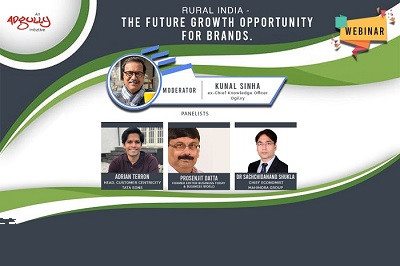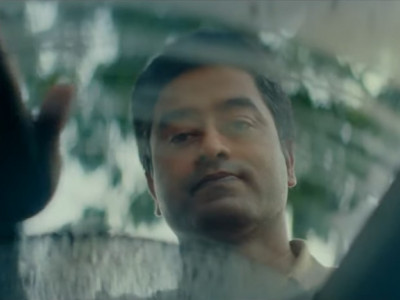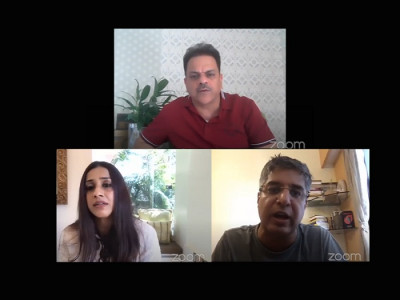While power of rural is strong, macro-economic forces can impact growth: Experts
The COVID-19 pandemic has disrupted the entire industry and all brands across several categories are anxiously waiting to revive their brands. Out of box thinking and innovative marketing strategy is the need of the hour to re-energise brands and get them back on track. To stimulate demand is the one-point agenda of every brand. Many marketing pundits and experts who have been talking about rural being the next destination for brands to revive the economy. To discuss and debate this pertinent topic, Adgully had brought in some industry experts from the field to share their views. The panellists included:
Kunal Sinha, Ex-Chief Knowledge Officer, Ogilvy, (Moderator)
Dr Sachchidanand Shukla, Chief Economist, Mahindra Group
Prosenjit Datta, Former editor, Business Today & Business World
Adrian Terron, Head, Customer Centricity, Tata Sons
Responding to the question on which are the sectors that would see rural actually picking up, Shukla said, “You are looking at the problem which is macro the IMF forecasted that about 160 countries will have per capita growth which will be positive. However, within two months they came back and said that 183 countries will have negative growth this year and if a problem which is as complex and pervasive, we really don’t know what has hit us and therefore the entire issue needs to be looked at from that perspective. The problem today is truly global, we keepreferring to the global financial crisis as the last template that we looked at but that wasn’t really global, the problem that you see now is truly global and with that perspective a lot of government emphasis, government focus should be there on the rural.
What I want to highlight is when you look at the rural sector the kind of money the government is spending now has not been seen for the last 10 years post the global financial crisis. So, the government spending part is the highest that has been there in the last 10 years. If you look at in the near term now just after the lockdown started and if you look at how much money the government has spent in procuring food grains it has been about Rs 80K crore to Rs 110K crore, just the wheat part; if I include rice and other things the number comes to about Rs 1.15 lakh-odd crore – and all these are ball park numbers. Now if we add the PM Kisan scheme and the MNREGA rural job scheme, then the government has spent nearly Rs 1.5 lakh crore in just about two months.
With that kind of a perspective, anything which is of a small ticket size and the kind of issues that we see on incomes there will be a challenge. Like I started my point by saying that per capita incomes are going to be negative for 180 plus countries and now if your income is short and your outlook is really clouded by the lack of clarity on vaccine and lockdown, etc., the spending bit will be done cautiously. So, when we try to look at something by looking at the sectors that will benefit it is the small ticket ones that will be preferred by most of the people in the near term.
Giving his views to Sinha’s question on the recovery part after the partial opening up, Adrian was of the opinion that one of the after effects of the steps that the government is taking is not just the income that flows into the rural consumer, but also the confidence that it kind of begets. So, when you talk to people within our group or you talk to people outside the pickup is likely to be seen and is already been seen in lower ticket consumer product but equally lower ticket brown goods like coolers, fans as well as OTC products that are available.
Of course, when you couple that with an equally good sowing season where twice the acres has been put under sowing vis-à-vis last year that sort of presages or good off take even for agri inputs have seen early interest in higher ticket items like tractors and so on and so forth, how that will play out is yet to be seen. Equally one of the interesting facts I picked up was given the reverse migrationmeans that there are lot of people moving back then you will need to build temporary dwellings refurbishments etc. even things sheds are seeing an uptake in terms of construction in the rural sphere. So, all around I think these symbols, signify of recovery are there but still it’s too early to call and having spoken to several people and looking at the numbers where it seems positive, but by no means we can come to any conclusion on the sustainability.
Commenting on his take and views on the bottlenecks faced in rural, Datta said that rural demand bouncing back depends largely on three things happening.
Three things will determine how quickly rural demand bounces back. One, the efficiency of transmission of government programmes. The government is allocating Rs 100 lakh crore on MNREGA alone and far more if other rural programs are included. How quickly that aid translates into cash in hands of rural workers is one. The second factor is the good monsoon that has been predicted which will impact farm incomes positively. And finally, if there is no major spread of the Coronavirus in rural areas because if the virus spreads in rural areas, the families will spend all their money in healthcare expenses.
So, if these three things happen together that is if the transmission and the infection in the rural towns is much lower and it doesn’t speed up and then if the income actually grow, I do not see a huge leap in rural growth. However, here I would like to qualify a bit that if you’re saying a huge leap over the first month of lockdown, then yes because income will be growing normal. But if you’re talking about the huge leap over this time last year, I am not so sure that is something that we will see in the next six months.
The discussion carried on with several other interesting insights and information shared by the panelists. While there is some sense of optimism expressed by the panelist but we need to be cautious and it’s a wait and watch situation before we can see some kind of visible growth happening in the rural sector.


















Share
Facebook
YouTube
Tweet
Twitter
LinkedIn